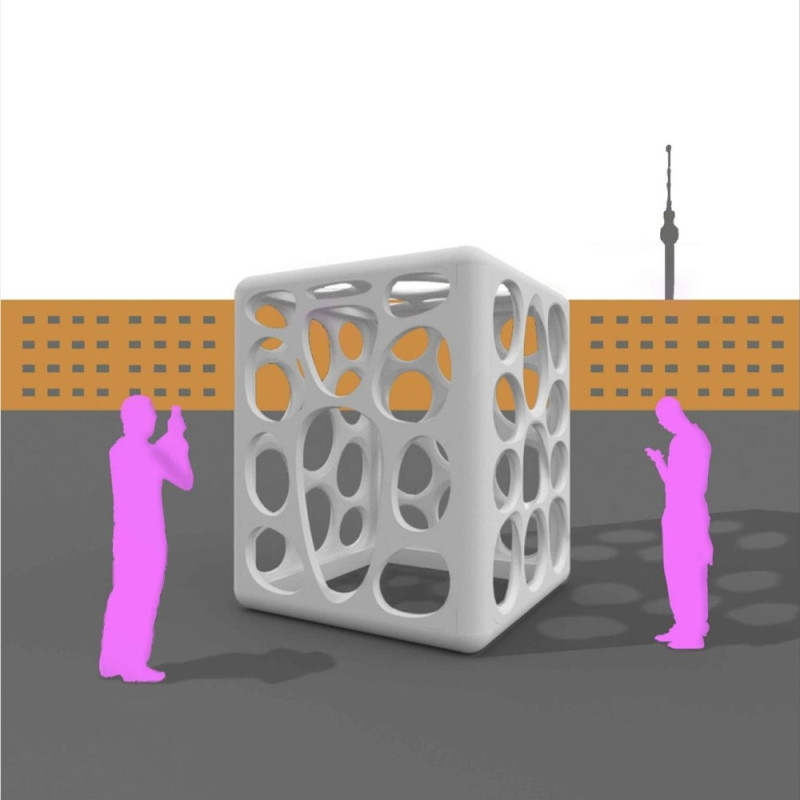5 key facts about this project
The design focuses on creating a space that adapts to the changing needs of people in an urban setting. It promotes both individual experiences and social interactions. The main components of the design are a wooden box that can be reconfigured and a neon membrane that responds to user input. Together, these features provide a place for both leisure and reflection in the community.
Dancing Wooden Box
The wooden box is a flexible structure that can be taken apart, forming a volume of 1m x 2.5m x 2.5m, intended for planting trees. This design element brings a touch of nature into the city, encouraging residents to connect with their environment. Surrounding the box are four benches, which create opportunities for people to gather and converse. This layout emphasizes community engagement and invites users to interact with one another in a shared setting.
Kinetic Neon Membrane
The neon membrane adds a lively visual aspect to the installation, offering an interactive element. Users can control its color and shape through a smartphone, allowing for a personal touch. This technological aspect reflects the changing times and the need for adaptable spaces. By enabling user participation, the membrane enhances the overall experience of the environment, making it feel alive and responsive.
Concept and Purpose
The design addresses the demand for flexible and interactive spaces, especially in light of recent events. It acknowledges the importance of mental health and leisure activities for both individuals and communities. By combining a temporary gathering area with a reflective space, the design meets the need for environments that support enjoyment and contemplation.
The wooden box and its benches create a comforting, grounded feel, while the kinetic membrane introduces a sense of modernity and movement. The relationship between these elements shapes a public space that invites exploration and engagement, striking a balance between the natural and the technological. The result is a thoughtful design that caters to the needs of a diverse urban population.



















































